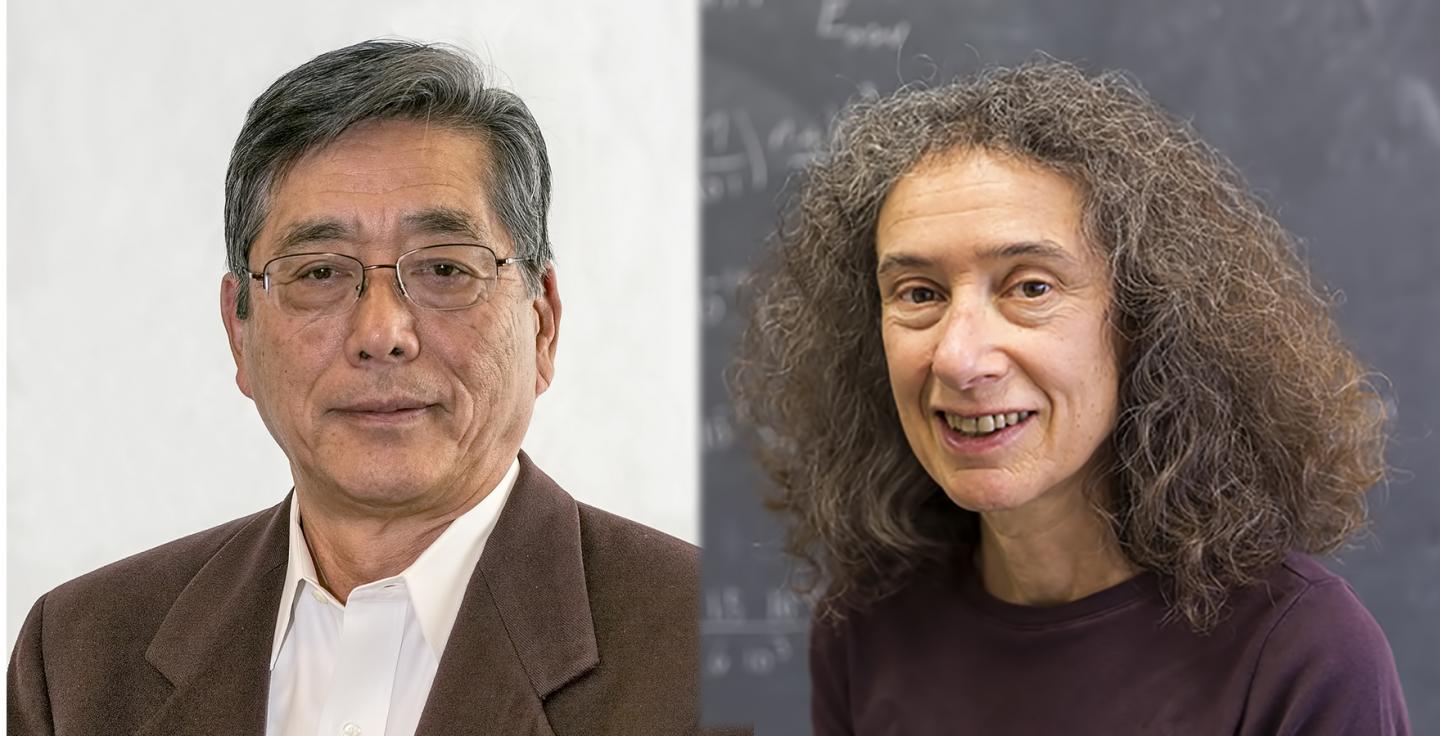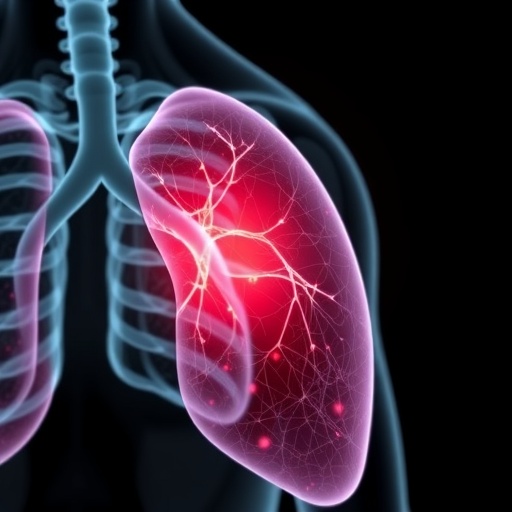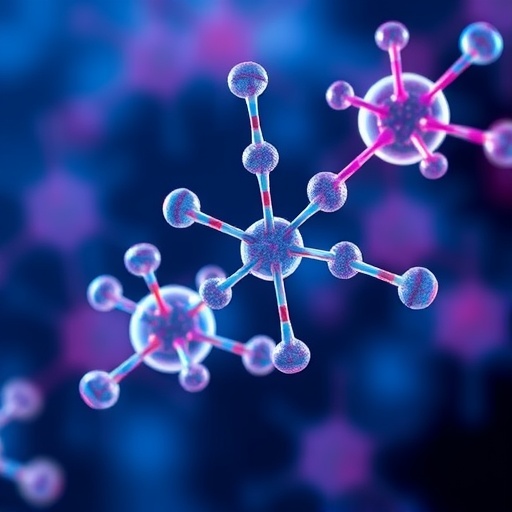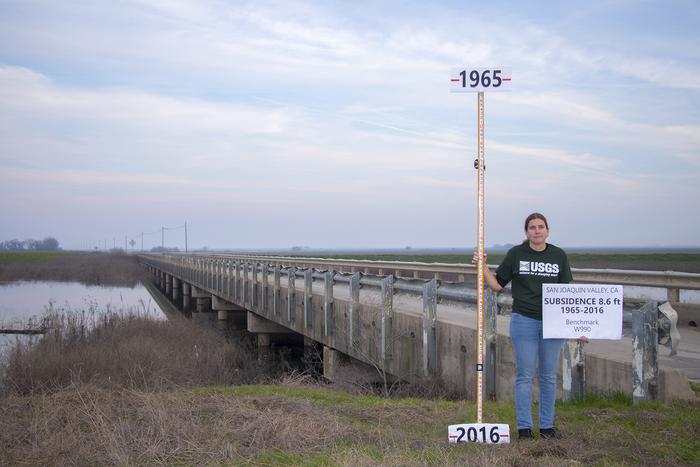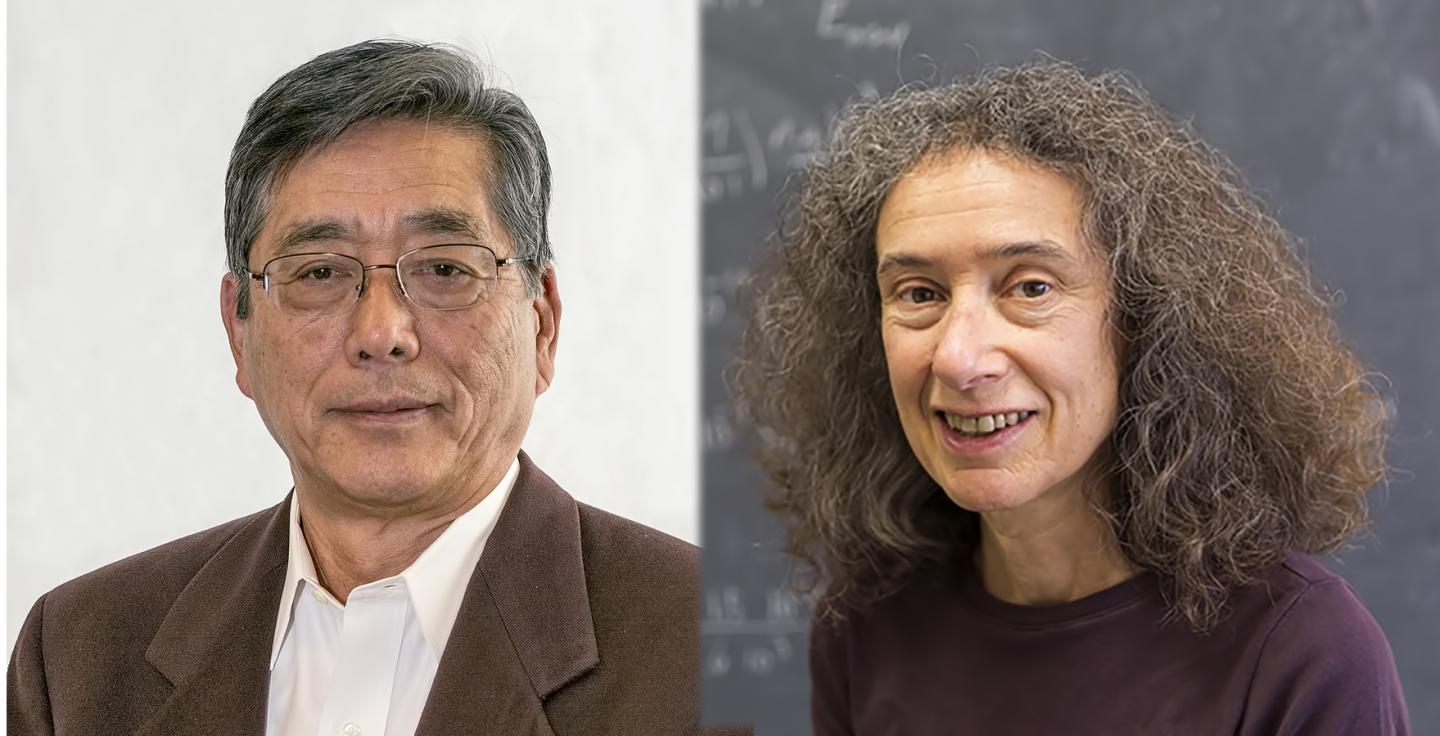
Credit: Elle Starkman/PPPL for Masaaki Yamada. Ellen Zweibel photo courtesy of the University of Wisconsin-Madison.
Magnetic reconnection research sheds light on explosive phenomena in astrophysics and fusion experiments
Challenging process that occurs throughout the universe now better understood
Scientists are closer than ever to unraveling a process called magnetic reconnection that triggers explosive phenomena throughout the universe. Solar flares, northern lights and geomagnetic storms that can disrupt cell phone service and black out power grids are all set off by magnetic field lines that converge, break apart and violently reconnect in ways that are not fully understood.
Now physicists Masaaki Yamada of the U.S. Department of Energy's (DOE) Princeton Plasma Physics Laboratory (PPPL) and Ellen Zweibel of the University of Wisconsin-Madison have provided a major perspective on four key problems in magnetic reconnection in a paper published December 7 in the British journal Proceedings of the Royal Society A
. Their research focuses on how the field lines embedded in plasma, the hot, charged gas composed of electrons and atomic nuclei — or ions — that makes up 99 percent of the visible universe, behave as they do. The findings are relevant to both astrophysics and magnetically controlled fusion experiments, which reconnection can shut down.
The extensive, 30-page paper, which the journal invited, advances understanding of four deep and long-standing puzzles:
- The rate problem. Why does reconnection take place much faster than theory indicates?
- The trigger problem. What determines the amount of energy that can be stored in a magnetic field and triggers its release?
- The energetics problem. How does reconnection convert magnetic energy into explosive kinetic energy?
- The interplay of scales problem. How does reconnection that occurs on a microscale trigger blasts that occur on a global scale?
Yamada and Zweibel, winners of the James Clerk Maxwell Prize in Plasma Physics in 2015 and 2016, respectively, take a comprehensive approach to these issues. The prize, awarded by the American Physical Society Division of Plasma Physics, honors their contributions to the dynamics of reconnection and to plasma astrophysics. Their paper combines data gleaned from satellite sightings and the Magnetic Reconnection Experiment (MRX) at PPPL, together with theory and computer simulation, to provide a detailed view of these puzzling processes.
On the rate problem, the authors note that two paths to fast reconnection have been identified. In the first, fast reconnection takes place when magnetized electrons and demagnetized ions behave differently, causing a phenomenon called a Hall effect in the reconnection layer. In the second, a process called plasmoid instability breaks up thin current layers into magnetic islands that produce rapid reconnection (see related article here.) "Characterizing the plasmoid instability in a large laboratory plasma is a goal for future research," the authors write.
There is also much work to do on the trigger problem, Zweibel and Yamada noted. Formation of a thin current sheet has long been held to be a prerequisite for fast reconnection, they write. However, distribution of the energy that erupts in solar flares "is a key observation which trigger theories must explain," they state, and identifying the power law behind the distribution "remains a distant but important goal." In power laws, one form of energy varies as a power of another.
With regard to the energetics problem, important progress has been made recently, the authors say. Experiments conducted on the MRX at PPPL show that reconnection converts about 50 percent of the magnetic energy, with one-third of the conversion accelerating the electrons and two-thirds accelerating the ions in the plasma. "These results raise the question of whether there is a universal principle for partitioning of converted energy, an important problem for future research," they write.
An explanation of the scale problem, in which tiny microprocesses produce large global effects, "remains extremely challenging," the authors state. Nonetheless, much "important progress" has been made. While the triggers for reconnection are mostly global, the sources of energy conversion can be either global or small in scale. Therefore, "the presence of a continuum of scales coupled from microscopic to macroscopic may be the most likely path to fast reconnection."
Going forward, the authors write that, "prospects for future progress depend on continued successful innovations in methodology. The combination of laboratory experiments, space plasma measurements and numerical simulations is proving to be especially successful." Such developments will lead future research to focus "on the specialized features of natural plasmas throughout the universe."
###
The research was supported by the Vilas Trust and the University of Wisconsin-Madison for Zweibel's work and the DOE Office of Science for Yamada's.
PPPL, on Princeton University's Forrestal Campus in Plainsboro, N.J., is devoted to creating new knowledge about the physics of plasmas — ultra-hot, charged gases — and to developing practical solutions for the creation of fusion energy. The Laboratory is managed by the University for the U.S. Department of Energy's Office of Science, which is the largest single supporter of basic research in the physical sciences in the United States, and is working to address some of the most pressing challenges of our time. For more information, please visit science.energy.gov.
Media Contact
John Greenwald
[email protected]
609-243-2672
@PPPLab
http://www.pppl.gov
############
Story Source: Materials provided by Scienmag


